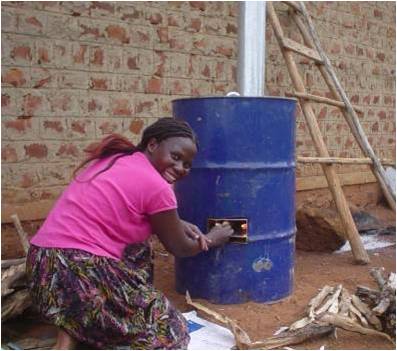Rocket Stove Questions and Answers: Rocket Stove Air Supply - Primary and Secondary Air
Hugh Burnham-Slipper (UK) and Kevin Chisholm (CAN), Dean Still (Aprovecho), AD Karve (ARTI, India) November 25-26, 2006
 Rocket Design (Aprovecho)
Rocket Design (Aprovecho)Select to Enlarge
Q.
Dear Stovers,
The fuel magazine that sticks out the side of a rocket stove is divided into two: above the shelf is where the fuel goes, and air passes under the shelf. Am I right in thinking that the fuel should be packed in as much as possible, to try and minimise the amount of air entering the stove through the fuel inlet? If so, why? My experience is that char builds up at the bottom of the elbow, so air is needed to burn the char (which in turn pyrolises the fuel), and a second air supply is required to burn the volatile gases. Any pointers would be warmly received.
Confused, Hugh.



